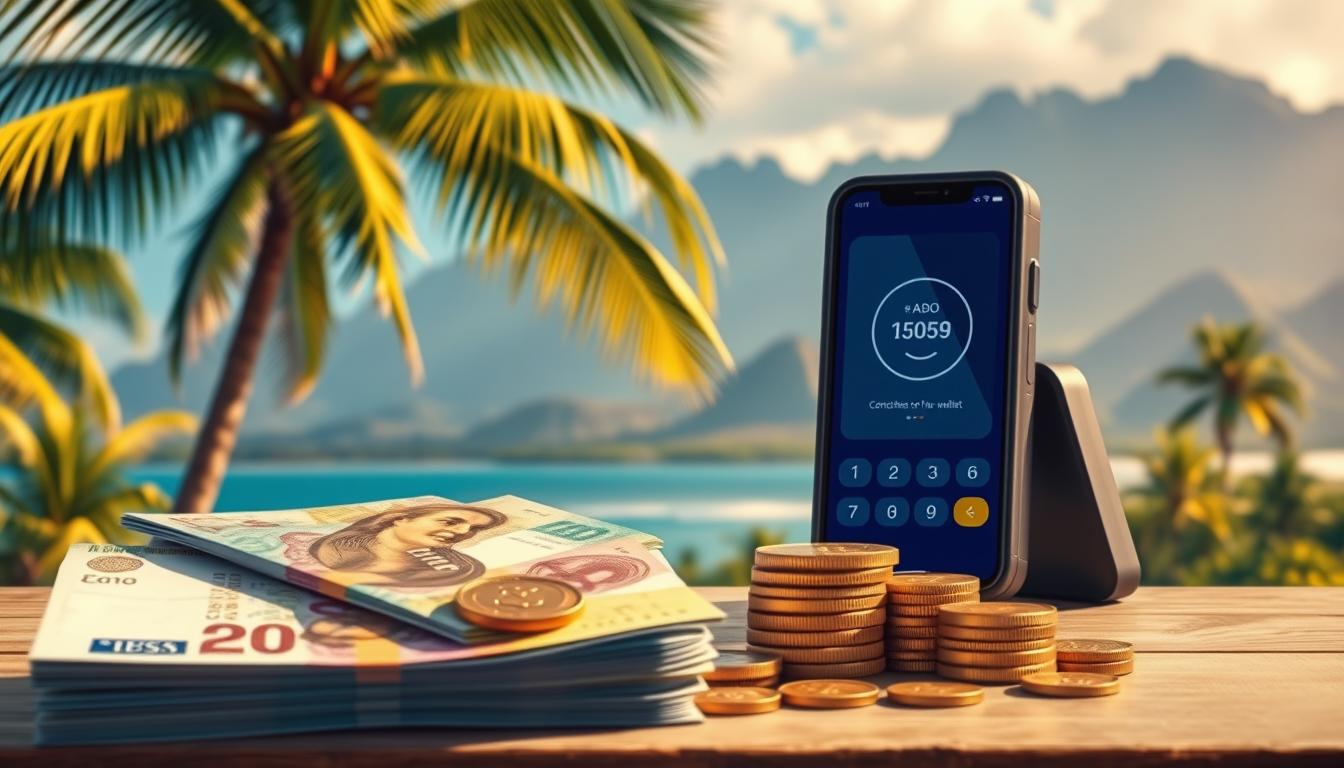✓ Accommodations✓ Flights✓ Rental Cars✓ Tours & Activities
Did you know that 95% of Africans don’t have a bank account? This makes understanding local payment methods crucial when traveling. In Comoros, the official currency is the Comorian Franc (KMF), and cash is often the preferred way to pay. However, having the right travel card can save you time, money, and hassle.
Cards like Wise, Chime, Monzo, and Netspend are excellent options for spending in KMF. They offer competitive exchange rates and low fees, making them ideal for international travel. Plus, they’re widely accepted in larger establishments, though smaller shops may still require cash.
This guide will walk you through everything you need to know about managing currency and payment methods in Comoros. From ordering your card to avoiding hidden fees, we’ve got you covered. Let’s dive in!
Understanding the Comoros Currency Landscape
Navigating the currency system in Comoros starts with understanding the Comorian Franc (KMF). As the official currency, it’s the only legal tender accepted across the islands. Whether you’re shopping at local markets or dining at restaurants, KMF is essential for all transactions.
The Comorian Franc comes in both banknotes and coins. Banknotes include 500 FC, 1,000 FC, 2,000 FC, 5,000 FC, and 10,000 FC, while coins are available in 25 FC, 50 FC, 100 FC, and 250 FC. Smaller denominations are handy for everyday purchases, while larger notes are ideal for bigger expenses.
Overview of the Comorian Franc (KMF)
The Comorian Franc (KMF) is pegged to the Euro, ensuring stability in its value. This makes it easier to predict exchange rates when converting from USD or other currencies. For example, the current interbank rate is approximately 1 USD = 462 KMF.
Currency Denominations and Exchange Rates
Understanding the exchange rate is crucial for budgeting. Banks and exchange services may charge additional fees, such as a 3% overseas transaction charge or ATM withdrawal fees. Comparing rates between your bank and money transfer specialists can save you up to 5% on conversions.
By familiarizing yourself with the local currency and its denominations, you can manage your finances more effectively. This knowledge not only helps you avoid unnecessary fees but also ensures a smoother travel experience.
Comoros: Ultimate Travelers Guide to Currencies & Payments
Smart payment strategies can make your journey smoother. This guide is designed to help you navigate the financial aspects of your trip with ease. By choosing the right tools and planning ahead, you can avoid unnecessary stress and focus on enjoying your adventure.
Using a travel money card is one of the best ways to manage your money abroad. These cards offer competitive exchange rates and low fees, making them ideal for international use. Whether you’re dining at a restaurant or shopping at a local market, having the right card ensures you’re always prepared.
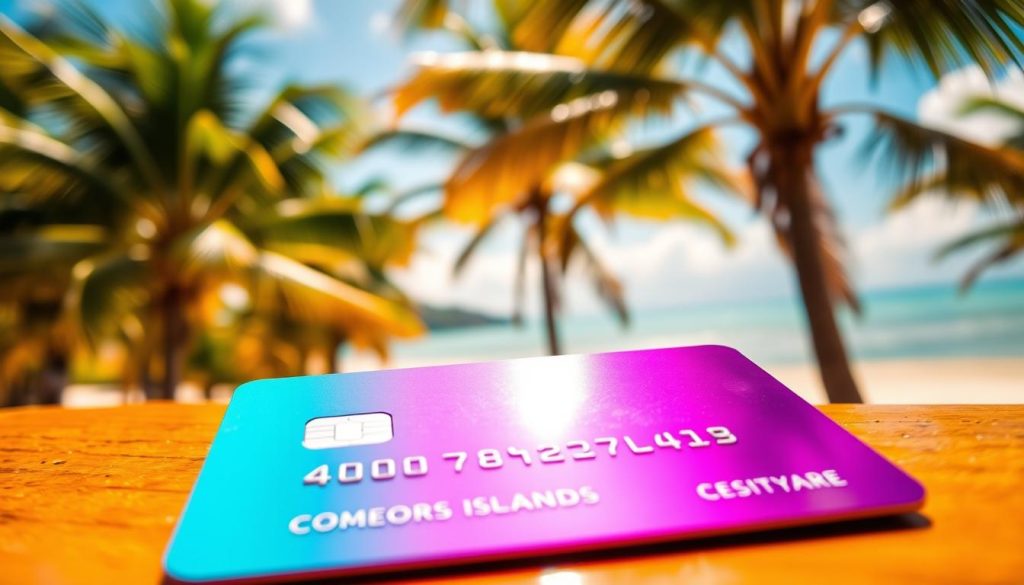
Planning your payment strategy is crucial. Smaller shops and vendors often prefer cash, so it’s wise to carry some local currency. However, larger establishments may accept cards, giving you flexibility. Here’s a quick comparison of popular travel money cards:
| Card | Exchange Rate | Fees | Acceptance |
|---|---|---|---|
| Wise | Competitive | Low | Widely accepted |
| Chime | Market rate | No foreign fees | Limited |
| Monzo | Fair | Low | Widely accepted |
| Netspend | Standard | Moderate | Limited |
Being informed about exchange rates and fees is essential. As one traveler shared,
“Knowing the local rates saved me from overpaying at ATMs.”
Thistipcan help you make smarter financial decisions during your trip.
In the upcoming sections, we’ll dive deeper into the features of each card, how to order one, and strategies to minimize fees. With the right plan, you can make the most of your money and enjoy a hassle-free experience.
Exploring the Best Travel Money Cards for Comoros
Choosing the right travel money card can make your trip hassle-free. With so many options available, it’s important to compare features, fees, and benefits to find the best fit for your needs. Whether you’re looking for low fees, wide acceptance, or extra perks, the right card can save you time and money.
Wise, Chime, Monzo, and Netspend: Feature Comparison
Here’s a detailed look at four popular travel money cards. Each offers unique features tailored to different types of travelers. From competitive exchange rates to low fees, these cards are designed to make your journey smoother.
| Card | Exchange Rate | Fees | Acceptance |
|---|---|---|---|
| Wise | Competitive | Low | Widely accepted |
| Chime | Market rate | No foreign fees | Limited |
| Monzo | Fair | Low | Widely accepted |
| Netspend | Standard | Moderate | Limited |
Benefits and Drawbacks for Each Card Option
Wise is a great choice for frequent travelers. It offers competitive exchange rates and low fees. However, it may not be ideal for those who prefer physical branches.
Chime stands out with no foreign transaction fees. It’s perfect for occasional travelers. But its limited acceptance can be a drawback in some regions.
Monzo is user-friendly and widely accepted. Its fair exchange rates and low fees make it a solid option. However, it’s primarily designed for UK residents.
Netspend is versatile and easy to use. While it has moderate fees, it’s a reliable backup option. Its limited acceptance might be a concern for some travelers.
By understanding the features and limitations of each card, you can choose the one that best suits your travel style. This ensures a smoother and more enjoyable experience abroad.
How to Order and Set Up Your Travel Money Card
Setting up a travel money card is a straightforward process. Whether you’re choosing Wise, Chime, Monzo, or Netspend, the steps are simple and designed to save you time. Here’s how to get started.
Step-by-Step Application Process
First, visit the official website of your chosen card provider. Create an account by entering your personal details, such as your name, address, and email. You’ll also need to verify your identity by uploading a photo of your ID or passport.
Next, top up your account with the desired amount. Most cards allow you to load funds via bank transfer or debit card. Once your account is funded, you’ll need to pay a one-time fee for the physical card. Delivery typically takes 7-21 days, depending on the provider.
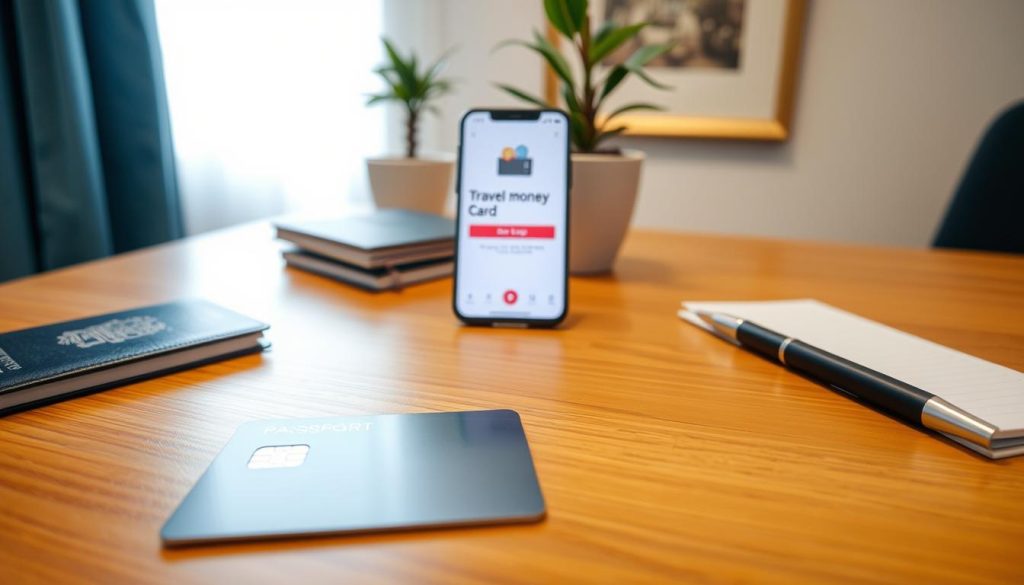
After receiving your card, activate it by following the instructions provided. You’re now ready to use it for payments and withdrawals abroad. Remember to check the card’s terms to understand its features and limitations.
Tips to Avoid Fees and Extra Charges
Planning ahead can help you minimize unnecessary fees. Here are some practical tips:
- Compare providers: Look for cards with low foreign transaction fees and competitive exchange rates.
- Load funds wisely: Avoid frequent top-ups to reduce transaction charges.
- Use ATMs strategically: Withdraw larger amounts less often to minimize ATM fees.
- Pay in local currency: Always choose the local currency option to avoid Dynamic Currency Conversion (DCC) fees.
By following these steps and tips, you can ensure a smooth and cost-effective experience with your travel money card. It’s a smart method to manage your payments and enjoy your trip without financial stress.
Safely Managing Payments Abroad
Staying safe with your payments while traveling is easier than you think. With modern tools and smart strategies, you can protect your money and enjoy peace of mind. Whether you’re using a card, mobile wallet, or cash, knowing the best practices ensures a smooth experience.
Utilizing Contactless Payments & Mobile Wallets
Contactless payments and mobile wallets like Apple Pay or Google Pay are becoming increasingly popular. They offer convenience and speed, allowing you to make transactions with just a tap. These methods also reduce the need to carry physical cash, which can be a safety risk.
Mobile wallets often come with built-in security features. For example, they use tokenization to protect your card details. This means your actual account information is never shared during a transaction. It’s a secure way to pay, especially in busy or unfamiliar places.
Security Features to Protect Your Funds
Modern cards and bank apps come with advanced security measures. Two-factor authentication (2FA) adds an extra layer of protection. You’ll need to verify your identity through a code sent to your phone or email before accessing your account.
Another useful feature is the ability to freeze your card instantly if it’s lost or stolen. Many apps also offer real-time notifications for every transaction. This helps you spot any unauthorized activity immediately.
Here are some additional tips to keep your money safe:
- Set up alerts: Enable notifications for all transactions to monitor your spending.
- Use secure networks: Avoid public Wi-Fi when accessing your bank app or making payments.
- Carry backup options: Have a secondary card or cash in case your primary method fails.
As one traveler shared,
“Freezing my card when I lost it saved me from potential fraud. It’s a feature I now rely on.”
By leveraging these tools and practices, you can manage your payments securely and focus on enjoying your trip.
Navigating ATM and Cash Withdrawals
Handling cash and ATM withdrawals can be tricky in unfamiliar places. While ATMs are widely available in cities like Moroni, fees and limited card acceptance make planning essential. Here’s how to manage your cash and withdrawals efficiently.
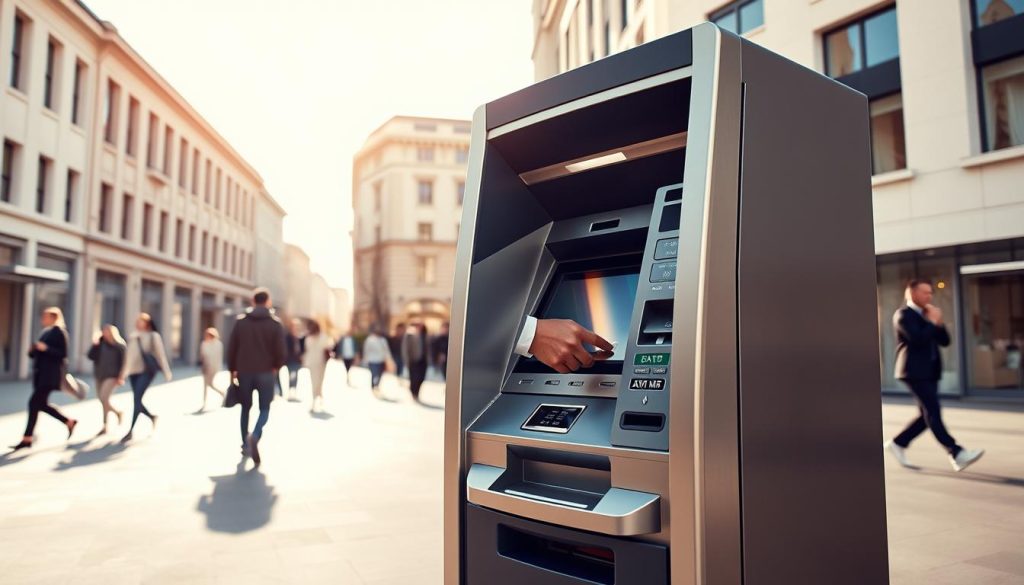
Strategies to Minimize ATM Fees
ATMs are convenient, but fees can add up quickly. To avoid unnecessary charges, use these tips:
- Choose partner networks: Some banks waive fees for withdrawals at partner ATMs. Check your bank’s network before traveling.
- Withdraw larger amounts: Reduce the number of transactions by taking out more cash at once. This minimizes per-withdrawal fees.
- Pay in local currency: Avoid Dynamic Currency Conversion (DCC) fees by selecting the local currency option.
As one traveler shared,
“Using partner ATMs saved me over $20 in fees during my trip.”
Managing Cash When Cards Are Not Accepted
In many places, smaller shops and vendors prefer cash. Here’s how to stay prepared:
- Carry enough cash: Estimate your daily expenses and withdraw accordingly. This avoids frequent trips to the ATM.
- Use a mix of payment methods: Keep a backup card or mobile wallet for emergencies.
- Know ATM locations: Familiarize yourself with nearby ATMs to avoid last-minute searches.
Here’s a quick comparison of typical ATM fees:
| Bank | Withdrawal Fee | Foreign Transaction Fee |
|---|---|---|
| Local Bank | $2-$5 | 3% |
| International Bank | $3-$7 | 1-2% |
By following these strategies, you can manage your cash and withdrawals effectively. This ensures a smoother and more cost-effective experience during your trip.
Practical Payment Tips When Traveling in Comoros
Planning your financial strategy before your trip can save you both time and money. By understanding local currency and exchange options, you can avoid unnecessary fees and focus on enjoying your journey. Here’s how to make the most of your payment methods while traveling.
Planning Currency Exchange Before Arrival
Exchanging currency before you arrive is a smart move. Airport exchange services often charge high fees, so it’s better to use your local bank or a trusted currency specialist. This ensures you get competitive rates and avoid last-minute stress.
Carry a mix of cash and cards for flexibility. Smaller vendors may prefer cash, while larger establishments often accept cards. Here’s a quick comparison of exchange options:
| Option | Exchange Rate | Fees |
|---|---|---|
| Local Bank | Competitive | Low |
| Airport Exchange | Poor | High |
| Currency Specialist | Fair | Moderate |
Cost-Saving Strategies for Daily Transactions
Managing your money wisely can significantly reduce costs during your trip. Use a low-fee travel card for most transactions, as it offers better rates than cash exchanges. Always choose the local currency option to avoid Dynamic Currency Conversion (DCC) fees.
Here are some actionable tips to save money:
- Withdraw larger amounts: Minimize ATM fees by taking out more cash at once.
- Use partner ATMs: Some banks waive fees for withdrawals at partner networks.
- Monitor transactions: Check your statements regularly to spot unauthorized charges.
As one traveler shared,
“Planning my currency exchange saved me over $50 in fees. It’s a simple step that makes a big difference.”
By following these strategies, you can manage your payments efficiently and enjoy a hassle-free travel experience.
Local Experiences: Paying at Hotels, Restaurants, and Markets
From hotels to local markets, payment methods vary widely in this country. Understanding these differences can help you navigate transactions smoothly and avoid surprises. Whether you’re dining at a restaurant, staying at a hotel, or shopping at a market, knowing what to expect is key.
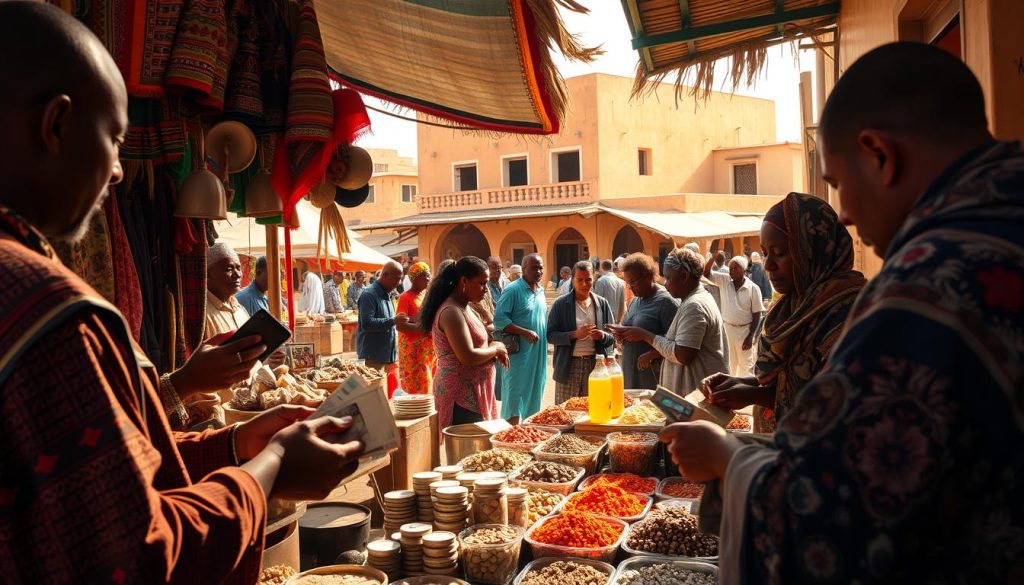
Payment Methods at Hotels and Tourist Venues
At major hotels like the Golden Tulip, specific cards such as Visa are often accepted. However, cash remains a preferred option in many establishments. It’s a good idea to confirm payment methods before booking to avoid last-minute issues.
For smaller accommodations, cash is almost always required. This is especially true in budget-friendly options, where card facilities may not be available. Always carry enough local currency to cover your stay.
Real-World Tips from Local Travelers
Travelers often share valuable insights about managing payments in this region. One visitor noted,
“Carrying cash saved me from awkward situations at smaller vendors. It’s a must for markets and local eateries.”
Another tip is to check with vendors about accepted payment methods before making a purchase. This simple step can prevent misunderstandings and ensure a smooth transaction.
Here’s a quick guide to managing payments at different venues:
- Hotels: Confirm card acceptance in advance; carry cash for smaller lodgings.
- Restaurants: Upscale places may accept cards, but cash is safer for local spots.
- Markets: Cash is king; negotiate prices and pay in local currency.
By planning ahead and understanding local preferences, you can manage your payments effectively. This ensures a stress-free experience as you explore the unique offerings of this country.
Insurance, Safety, and Additional Financial Tips
Ensuring your financial safety while traveling involves more than just managing your daily expenses. It’s about being prepared for unexpected situations and having the right tools to handle them. This section covers essential precautions, including travel insurance and backup payment options, to keep your money secure.
Travel Insurance: What You Need to Know
Travel insurance is a must-have for any trip. It covers medical emergencies, trip cancellations, and even lost luggage. Before you leave, check if your policy includes medical evacuation and hospital stays. This is especially important in areas with limited healthcare facilities.
Here’s a quick checklist for choosing the right travel insurance:
- Medical coverage: Ensure it includes emergency medical expenses and evacuation.
- Trip cancellation: Look for policies that reimburse non-refundable expenses.
- Personal belongings: Coverage for lost or stolen items can save you from unexpected costs.
Backup Payment Options for Emergencies
Having a backup payment method is crucial in case your primary card fails. Carry a secondary card or keep emergency cash in a secure place. This ensures you can access funds even if one method isn’t working.
Here’s a comparison of popular backup payment options:
| Option | Pros | Cons |
|---|---|---|
| Secondary Card | Widely accepted, easy to use | May have foreign transaction fees |
| Emergency Cash | No reliance on technology | Risk of theft or loss |
| Mobile Wallet | Convenient, secure | Limited acceptance in some areas |
Always check with your bank about transaction fees for emergency withdrawals. Planning in advance ensures you’re never left without access to your money.
Conclusion
Managing your finances while traveling doesn’t have to be stressful. By selecting the right credit card and understanding local payment methods, you can save time and avoid unnecessary fees. Make sure to research your options before your trip to ensure a smooth experience.
Use the tips and comparisons in this guide to make informed decisions. Carry a mix of cash and cards for flexibility, and always have a backup payment method. This preparation will enhance your overall travel experience.
Plan your withdrawals strategically to minimize fees. Enjoy your adventure with confidence, knowing your finances are well-managed. Safe travels!
The above is subject to change.
Check back often to TRAVEL.COM for the latest travel tips and deals.
